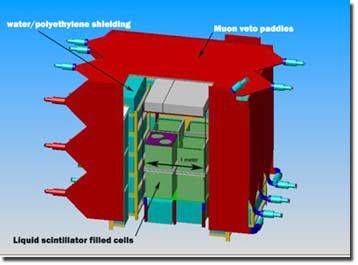A mobile breakthrough for water environment monitoring
A novel colorimetric multi-channel sensor on cell phone platform
Reliable colorimetric analysis technologies have been widely praised for their highly sensitive and selective responses towards various contaminants in environmental monitoring. In principle, the chromogenic agent selectively reacts with the target in water samples, and the colored product reflects the specific absorbance spectrum. Obeying the Lambert-Beer law, the absorbance is proportional to the concentration of the absorbing species, providing the basis for the qualitative and quantitative detection of contaminants in water samples. The observation by eye has the advantage of low cost, but the accuracy is unsatisfactory. The conventional photoelectron detector, such as the spectrophotometer and a microplate reader, is expensive and thus difficult to be applied in resource-limited or remote environments.

Symbolic image
Computer-generated image

Yunpeng Xing, Boyuan Xue, Yongshu Lin, Xueqi Wu, Fang Fang, Peishi Qi, Jinsong Guo, Xiaohong Zhou


The application scenario of colorimetric analysis technologies has led to a keen interest in the balance of accuracy and cost. Considering both accuracy and cost, developing colorimetric analysis technologies on the commercial cellphone platform is gathering significant attention in environmental monitoring because of the low cost, high flexibility, easy to miniaturization, and widespread ownership of cellphone. Notably, the outstanding advantages of cellphone-based colorimetric technology is expected to greatly accelerate the environmental and health-related analysis capabilities in the remote or less-developed countries and regions. However, the majority of reported studies focused on single-channel colorimetric detection, which led to a limited detection efficiency, especially facing with complicated contaminants in water samples.
Research on cellphone-based multi-channel sensing systems has gained growing interest because the systems have the potential to simultaneously detect multiple targets in a single measurement, and the involved techniques for the rapid assessment of water samples are fast, robust and inexpensive. To realize the multi-channel sensing capability, a mainstream technology pathway is to directly capture the colorimetric images from 96-well plates using a cellphone camera. In all cases, the majority of strategies to improve the sensing capability of the cellphone-based system were based on a monochromatic light source, lacking universality and flexibility towards different contaminants which showed different absorption peaks.
In this work, the researchers from Harbin Institute of Technology Tsinghua University and Chongqing University proposed a cellphone-based colorimetric multichannel sensor for water environmental monitoring. A white LED array was used as the incident light to illuminate a 96-well plate. To improve the sensitivity of the sensor, a delicate optical path system was created by using a diffraction grating to split six white beams transmitting through the multiple colored samples. The transmitted light from six wells was collected by six optical fibers and imaged by a cellphone camera after passing through a diffraction grating, which allows the cellphone CMOS camera to capture the diffracted light for image analysis. The image was captured by a custom-designed cellphone app for analysis using a specific algorithm, yielding detection results which were displayed using the same app. This study entitled “A cellphone-based colorimetric multi-channel sensor for water environmental monitoring” is published online in Frontiers of Environmental Science & Engineering in 2022.
The compact sensor was successfully tested for simultaneous detection of various environmental contaminants with an absorption wavelength range of 400–700 nm, achieving high sensitivity, specificity and reliability. By introducing the diffraction grating for splitting light, the sensitivity was improved by over six folds compared with a system that directly photographed transmitted light. As a successful proof-of-concept, the sensor was used to detect turbidity, orthophosphate, ammonia nitrogen and three heavy metals simultaneously with high sensitivity. Moreover, high stability (RSD of 0.37%–1.60%) and excellent recoveries (95.5%–106.0%) demonstrated that our sensor can conduct accurate detection in real water matrices.
Owing to the advantages of remarkable detection performance, low cost, easy operation, good portability, and multi-index measurement, the miniature sensor demonstrated in-field sensing ability in environmental monitoring, which can be extended to point-of-care diagnosis, food safety control and risk early warning, etc. Notably, by introducing the biorecognition materials, such as enzyme, antibody and functional nucleic acid, the sensor has the potential to be smarter to realize the detection of trace organic matters. Further, it can be expected that this technology would allow the detection channels up to 96 on the premise of overcoming the limitation of the volume or numbers of the diffraction grating.



























































